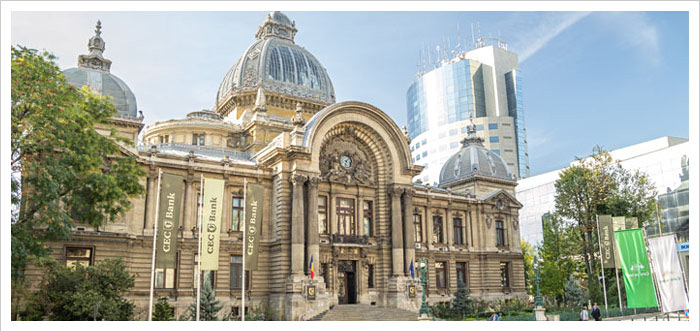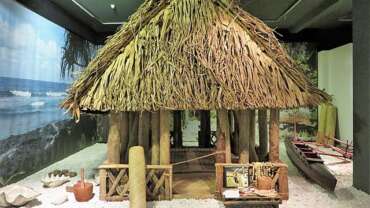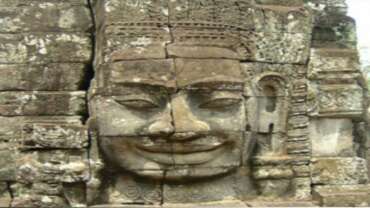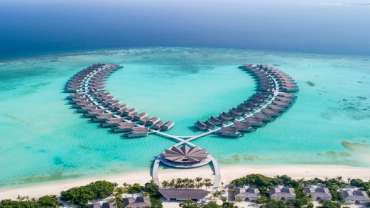Romania - Explore the Carpathian Garden
Authentic, Natural and Cultural are the words that best capture the essence of Romania, a dynamic country rich in history, arts and scenic beauty.
Romania offers countless unique travel experiences that are waiting to be discovered. A journey of three of four hours, by car or train, can take you from the Danube River to a beautiful, intact, medieval town; from Bucharest – Romania’s capital city – to the Black Sea; from Southern Transylvania to the historic regions of Bucovina or Maramures.
Take a step back in time as you visit one of the unique painted monasteries in Bucovina, the perfectly preserved hilltop citadel of Sighisoara or an authentic, centuries-old, village in Maramures. Explore Romania’s many architectural treasures and experience its vibrant and flourishing arts scene.
History of Romania
Romania’s history has not been as idyllically peaceful as its geography.
Over the centuries, various migrating people invaded Romania.
Romania’s historical provinces Wallachia and Moldova offered furious resistance to the invading Ottoman Turks.
Transylvania was successively under Habsburg, Ottoman, Hungarian or Wallachian rule,
while remaining an (semi) autonomous province.
Romania’s post WWII history as a communist-block nation is more widely known, primarily due to the excesses of the former dictator Nicolae Ceausescu. In December 1989 a national uprising led to his overthrow.
The 1991 Constitution re-established Romania as a republic with a multiparty system, market economy and individual rights of free speech, religion and private ownership.
Ancient History / Roman Period (3600 BC – 500 AD)
Middle Ages / Byzantine Period (500 – 1500)
Early Modern / Ottoman Period (1500 – 1750)
Mid Modern Period (1750 – 1914)
Contemporary Period (1914 – present)
Some of the history that has shaped Romania
What is now Romania has been inhabited since the Paleolithic Age
as evidenced by carved stone tools unearthed there.
10,000 B.C.
Approximate date of the first known art in present day Romania: cave paintings in northwest Transylvania.
4,000 B.C.
Approximate date of pottery (dated to the Neolithic Age) that is found in all regions of Romania.
3,000 B.C.
Thracian tribes of Indo-European origin, who migrated from Asia, occupied the actual territory of Romania.
2,000 B.C.
A distinctive Thracian sub-group emerged in what is now Romania.
The Greeks called these people Getae, but to the Romans they were Dacians.
Herodotus called them “the fairest and most courageous of men”
because they believed in the immortality of the soul and were not afraid to die.
700 B.C.
Greeks arrived and settled near the Black Sea.
The cities of Histria, Tomis (now Constanta) and Callatis (now Mangalia) were established.
Western-style civilization developed significantly.
70-44 B.C.
Dacian king Burebista controlled the territory of modern-day Romania.
Burebista created a powerful Dacian kingdom.
100 A.D.
Dacian civilization reaches its peak.
“The Dacians had a civilization of which they could be proud.
Their lands were rich in minerals, and they acquired great skill in metalworking.
They traded with the Greek world, importing pottery, olive oil, and wine,
and may have engaged in slave dealing.
Compared with their neighbors they enjoyed a high standard of living, as well as a rich spiritual life.
Military, the Dacians were less advanced.
Unlike the Roman legions, they did not field a standing army,
although there was a warrior class, the comati, or ‘long-haired ones’. “
(attribution: Anthony Everitt, Hadrian and the triumph of Rome).
106 A.D.
Romans conquer and colonize Dacia (modern-today Romania).
106 – 274 A.D.
Dacia is a province of the Roman Empire.
Dacians gradually adopt numerous elements of the conquerors’ language.
271 A.D.
After fighting off the barbarian Goths, most Roman troops abandon Dacia.
4th Century
Christianity is adopted by the Daco-Roman, Latin-speaking people.
Both “Byzantine Empire” and “Eastern Roman Empire” are historiographical terms created after the end of the realm; its citizens continued to refer to their empire as the Roman Empire (Ancient Greek: Basileia Rhõmaiõn; Latin: Imperium Romanum or Romania) and to themselves as “Romans”.
4th – 9th Centuries
Nomadic tribes from Asia and Europe (Goths, Visigoths, Huns, Slavs) invade Dacia.
896 — late 1100s
Magyars (Hungarians) invade regions in western and central present-day Romania
(Crisana, Banat and Transylvania).
The local population — Romanians – were the only Latin people in the eastern part of the former Roman Empire and the only Latin people to belong to the Orthodox faith.
The oldest extant Hungarian chronicle, “Gesta Hungarorum” or The Deeds of the Hungarians,
(based on older chronicles) documents the battles between the local population in Transylvania,
lead by six local rulers, and the invading Magyars.
12th Century
Saxon (German) settlers begin to establish several towns in Transylvania. (Germans were invited to settle in Transylvania by the king of Hungary who wanted to consolidate his position in the newly occupied territory).
Szeklers people – descendants from Attila’s Huns – were also brought to eastern and southeastern Transylvania as border guards.
13th Century
The first formal division of the formerly unified Romanian population. The principalities of Wallachia, Moldavia, and Transylvania are established. Transylvania becomes an autonomous principality under Magyar rule, until 1526. Magyar forces tried unsuccessfully to capture Wallachia and Moldavia.
14th-15th Centuries
Wallachia and Moldavia offered resistance to the Ottoman Empire expansion.
1526
Transylvania (a semi-autonomous principality) becomes subject to Ottoman (Turkish) authority.
16th-17th Century
Threatened by the Turks who conquered Hungary, the three Romanian provinces of Wallachia, Moldova and Transylvania are able to retain their autonomy by paying tribute to the Turks.
The principality of Transylvania prospered as a vassal state of the Ottoman Empire.
1600
Wallachia, Moldavia and Transylvania (map) are briefly united under Mihai Viteazul (Michael the Brave), prince of Wallachia. Unity lasted only one year after which, Michael the Brave was defeated by the Turks and Hapsburg forces. Transylvania came under Hapsburg rule while Turkish suzerainty continued in Wallachia and Moldavia.
1699
Transylvania and Bucovina (smaller region north of Moldavia)
are incorporated in the Habsburg Empire.
1765
Transylvania was declared a Grand Principality of Transylvania,
further consolidating its special separate status within the Habsburg Empire.
1821
Moldavia loses its eastern territory east of river Prut (also called Bessarabia) to Russia.
1856
The principalities of Wallachia and Moldavia
— for centuries under the suzerainty of the Turkish Ottoman Empire –
secure their autonomy.
1859
Alexandru Ioan Cuza is elected to the thrones of Moldavia and Wallachia.
1862
Wallachia and Moldavia unite to form a national state: Romania.
1866
Carol I (German born) succeeds Alexandru Ioan Cuza, as prince of Romania.
1867
Transylvania falls under the direct rule of Hungary and a strong push for
Magyarisation (of names and official language) follows.
1877
On May 9 the Romanian parliament declared the independence of Romania from the Ottoman Empire.
A day later, the act was signed by Prince Carol I.
1881
Kingdom of Romania officially proclaimed.
1892
The leaders of the Romanians of Transylvania sent a Memorandum to the Austro-Hungarian Emperor,
Franz Joseph demanding an end to persecutions and Magyarization attempts.
1914
King Carol I dies. He is succeeded by his nephew King Ferdinand I (1914-1927).
Romania enters WWI on the side of the Triple Entente aiming to regain its lost territories
(part of Transylvania, Bessarabia and Bukovina).
1918
During large public assemblies representatives of most towns, villages and local communities in Transylvania, Bessarabia and Bucovina declare union with Romania.
1930
Carol II, Ferdinand’s I son, becomes king of Romania and establishes royal dictatorship.
1939
Germany demands a monopoly on Romanian exports (mainly oil, lumber and
agricultural products) in exchange for the guarantee of its borders.
1940
The Soviet Union annexes Bessarabia (eastern Romania – today Republic of Moldova)
and Northern Bucovina (NNE Romania).
Germany and Italy force Romania to cede Northern Transylvania to Hungary.
Widespread demonstrations against King Carol II. Marshall Ion Antonescu forces him to abdicate
in favor of his 19-year-old son Michael. Carol II flees Romania.
1941
Marshall Ion Antonescu imposes a military dictatorship.
In order to regain Bessarabia, Romania enters WWII against the Soviet Union.
1944
King Michael I engineers a royal coup and arrests Marshall Ion Antonescu.
Romania reenters war on the Allies side.
1945
The Yalta Agreement makes Romania part of the Soviet system.
Communist-dominated government installed.
1947
With Soviet troops on its territory, Romania enters the sphere of influence of the Soviet Union.
The communists, who gradually took the power, force King Michael I to abdicate
and proclaim Romania a People’s Republic.
King Michael leaves the country and moves to Switzerland.
1950s
After Stalin’s death, Romania begins to distance itself from Moscow.
1964
Romania declares autonomy within Communist Bloc.
1967
Nicolae Ceausescu becomes President of the Council of State merging leadership of state and party.
1968
Romania condemns the Soviet-led Warsaw Pacy invasion of Czechoslovakia;
Romania’s communist leader Nicolae Ceausescu, earns praise and economic aid from the West.
1974
Romania was the first country of the Soviet Bloc to have official relations with the European Community.
(and sign a treaty that included Romania in the Community’s Generalized System of Preferences).
1980s
Obsessed with repaying the national debt and megalomaniac building projects Ceausescu orders a ban on importation of any consumer products and commands exportation of all goods produced in Romania except minimum food supplies. Severe restrictions of civil rights are imposed.
1982
Romania calls on Soviet Union to withdraw from Afghanistan.
1987
Ceausescu indicates Romania will not follow Soviet reform trends.
1989
Romanians unite in protests against the communist leadership and local demonstrations sparked a national uprising that finally ousted communist ruler Nicolae Ceausescu and his cabinet.
1990
First free, multi-party elections after WWII are held in Romania.
1991
Romanians vote for a new Constitution.
2004
Romania joins NATO (North Atlantic Treaty Organization).
2007
Romania becomes a member of the European Union.
People of Romania
People
Foreign visitors consider Romanians among the friendliest and most hospitable people on earth.
Romanians are by nature fun loving, warm, hospitable, playful, with an innate sense of humor.
Romania is associated with big names in arts and sports:
Constantin Brancusi (1876 – 1957) — the artist whose works redefined sculpture, the most important sculptor of the Twentieth-Century.
Angela Gheorghiu
“The world’s most glamorous opera star” (New York Sun). “
“…perhaps the most instantly recognizable and interesting soprano voice of our time… a liquid instrument of great beauty” (Gramophone). www.AngelaGheorghiu.com
Alexandra Nechita — a young Romanian painter living in California, known for her distinct style. More info about Alexandra and her art please: AlexandraNechita.com
Ilie Nastase — Twice ranked as the world’s number one men’s player in the early 1970s, Ilie Nastase won two Grand Slam singles titles during his illustrious career – the US Open in 1972 and the French Open in 1973.
One of the greatest touch players of the post-war era, Nastase was runner-up at Wimbledon in 1972 and 1976 and, in all, he won 57 career singles titles and 51 doubles titles.
Ilie Nastase is still one of crowd’s favorites at the U.S. Open.
Radu Lupu – If there’s one pianist who challenges you to hear classical music in a whole new way, it’s Radu Lupu. Since winning the Van Cliburn Competition in 1966, he’s gained a loyal following for his idiosyncratic interpretations that always explore the complex emotions behind the music.
Nadia Comaneci – A gymnastics legend, stunning the world with her skills on the uneven bars, the first in the world to score a perfect 10. Nadia is practically single-handedly responsible for the popularity of gymnastics as a sport, thanks to sweeping the Olympics for gold medals in her youth.
Other world renowned Romanian artists include the writer Eugen Ionesco, pan flute virtuoso Gheorghe Zamfir and musician George Enescu.
About 19,500,000 people live in Romania.
Ethnic breakdown is 89% Romanian 7.5% Hungarian, 1.9% Gypsy,
German, Ukrainian, Armenian, Croatian, Serbian and Turkish.
More than 55% of Romania’s population lives in urban areas (there are 230 towns, 25 cities with a population of more than 100,000 and 8 cities with more than 300,000 inhabitants) while 45 % of Romanians have their main residence in rural areas (2,868 communes and 13,285 villages).
The main administrative divisions are called “judet” (county).
There are 41 counties in Romania.
The capital city, Bucharest (Municipiul Bucuresti), has the status of a county.
Main religions in Romania:
Eastern Orthodox 78%
Greek Catholic 10%
Roman Catholic 5%
Protestant 5%
Unitarian,
Jewish,
other
Language
Romanian, a Latin based language which is a continuation of the Latin spoken in ancient times in Dacia and Moesia – the eastern provinces of the Roman Empire. A 31-letter Latin alphabet is in use.
Ethnic minorities (Hungarian and German) use their own languages in school and civil administration.
Literacy rate in Romania is 98%.
Most Romanians living in towns and cities are able to communicate in English, French or German. In smaller villages only younger people and children usually speak foreign languages. Around 80% of Romanians speak one foreign language, 25% of Romanians speak at least two, 4% of Romanians speak three or more foreign languages.
Romania has over 100 universities, and the country annually produces some 30,000 engineering graduates;
8,000 earn their degrees in IT sciences.
Geography of Romania
Located halfway between the Equator and the North Pole, Romania is the 12th largest country in Europe.
Romania’s terrain is almost evenly divided between mountains, hills and plains.
The Carpathian Mountains
Although not as high as the Alps, the Carpathian Mountains extend over 600 miles in Romania, in the shape of an arch. They are divided into three major ranges: the Eastern (Oriental) Carpathians, the Southern Carpathians (also known as the Transylvanian Alps), and the Western Carpathians. Each of these ranges feature a variety of landscapes, due to the different types of terrain (glacial, karstic, structural, and volcanic).
Romania’s mountains are a great destination for numerous outdoor activities including: climbing, hiking, biking and river-rafting. Some of the most popular ski resorts are Poiana Brasov, Sinaia, Predeal, Vatra Dornei, Lake Balea and Paltinis.
The Danube Delta
Danube River ends its journey of almost 1864 miles through Europe in south-eastern Romania. Here the river divides into 3 frayed branches (Chilia, Sulina, Sfântu Gheorghe) forming the Danube Delta. It is the newest land in the country, with beaches expanding almost 65 feet into the sea every year.
Overall, the delta is a triangular swampy area of marshes, floating reed islands and sandbanks. It is a UNESCO Biosphere Reservation as well as a protected wetland and natural habitat for rare species of plants and animals.
For more information on the Danube Delta please visit
www.RomaniaTourism.com/Danube-Delta
The Black Sea
The Romanian Black Sea Coast stretches a little over 150 miles.
The Black Sea is a continental sea, with a low tide and salinity and water temperatures of 77 – 79˚F in the summertime. Its wide, sandy beaches facing east and south-east become a major tourist attraction from May until September.
Rivers
98% of the Romania’s rivers spring from the Carpathian Mountains. The upper streams are usually more spectacular, featuring numerous gorges, caves and precipices.
The main rivers in Romania are Mures (473 miles on Romania’s territory), Prut (461 miles on Romania’s territory), Olt (382 miles), Siret (347 miles on Romania’s territory), Ialomita (259 miles), Somes (233 miles on Romania’s territory) and Arges (217 miles). In the east, river waters are collected by Siret and Prut rivers. In the south, waters flow directly into the Danube and in the west most of them are collected by Tisa River.
Europe’s second longest river, the Danube, flows through southern Romania forming part of the country’s frontier with Serbia, Bulgaria and Ukraine. Its blue waters run along 621 miles, from Bazias to the Black Sea. Virtually all of the country’s rivers are tributaries to the Danube, either directly or indirectly.
The Danube is an important water route for domestic shipping, as well as international trade and tourist cruises. The main port, both for trade and tourism, is Constanta, linked to the Danube by a canal build in 1984. Tulcea, Galati, Calarasi, Giurgiu and Drobeta are other important river ports. The nearest Danube river port to Bucharest is Giurgiu. Older plans for construction of a 40 miles canal connecting Bucharest with the Danube River are now being re-considered by the Romanian Government.
Lakes
There are around 3,500 lakes in Romania, most of them small or medium.
The largest are the lagoons and coastal lakes on the Black Sea shore, such as Razim (164 sq. miles) and Sinoe (66 sq. miles), or lakes along the Danube bank – Oltina (8.5 sq. miles); Brates (8.1 sq. miles).
Formed at the end of the last Ice Age, the glacial lakes in the Carpathian Mountains are small, but spectacular. Worth mentioning are the glacial lakes in the Retezat Mountains: Zanoaga, the deepest lake in the country (95 feet) and Bucura, the largest (24.7 acres) as well as the lakes located in the Transylvanian Alps (Balea, Capra, Caltun, Podragu).
Lake St. Ana, located in Ciomatu Mare Massif, near Tusnad is the only volcanic lake in Romania, sheltered in a perfectly preserved crater and surrounded by vast fir-tree forests. The lake is solely fed by rain. Therefore, its waters are nearly as pure as distilled water.
The Red Lake (elevation 3,215 feet), located in the Hasmas Massif, near Bicaz Gorges, is unique in shape and landscape. It is a natural dam lake created in 1837 after a major landslide. The name “Lacul Rosu” (Red Lake) comes from the reddish alluvia deposited by its main tributary.
Flora and fauna
Due to its varied terrain and climate Romania has a diverse flora and fauna.
Over 3,700 species of plants and 33,792 species of animals can be found in Romania.
Oak, beech, elm, ash, maple and linden made up 71 percent of Romania’s forests while conifers (fir, spruce, pine and larch) account for the remaining 29 percent.
Soil and mineral resources
More than 58.000 square miles – almost two-thirds of the country’s territory – are suitable for agriculture. Arable land accounts for about 40 percent, pastures for 19 percent, and vineyards and orchards represent some 5 percent of the total land area.
Significant oil reserves are concentrated at the foothills of southern and eastern Carpathians. Oil reserves have also been discovered a few miles away from the Black Sea coast. Large deposits of natural gas are located in the Transylvanian Plateau.
There are important iron ore deposits in Poiana Rusca Mountains, Banat and Dobrogea regions, as well as in Harghita Mountains (Eastern Carpathians). Most of the nonferrous metal reserves are concentrated in the northwest, particularly in Maramures and Apuseni Mountains. Some of the largest gold deposits in Europe are also located in Apuseni. Large amounts of pure salt are located at: Slanic, Tîrgu Ocna, Ocna Mures, Praid and Cacica.
Authentic Experiences

Narrow Gauge Train Trips in Maramures – Romania
The narrow-gauge railway and the steam powered locomotives (Mocanita) in Viseu de Sus are one of the most remarkable railway heritage attractions in Romania and in Eastern Europe. It is the only remaining, working narrow gauge forestry railway of many that were constructed -in 1932 – to transport timber from the vast, remote forests of the Carpathian Mountains and their foothills.
Stay Authentic ! Unique accommodations in Romania
A number of century-old manor houses and residences, as well as unique hotels that stand out due to their long and interesting history, beautiful architecture, unique/ traditional decorations, modern design, rooms with spectacular view, character and great value are presented in our section dedicated to distinctive, authentic accommodations in Romania.






















